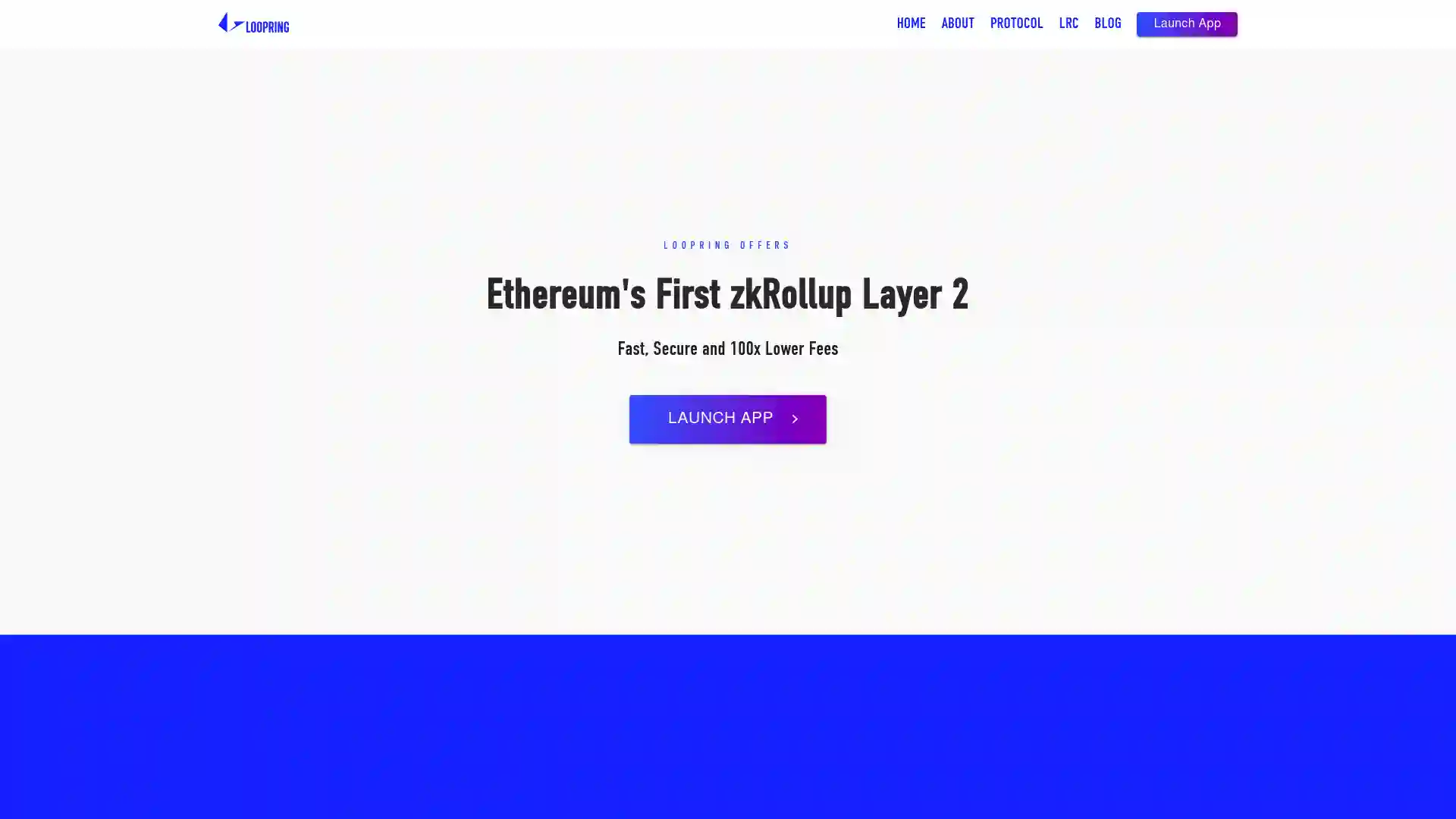Loopring (LRC)
Loopring is a decentralized exchange protocol and cryptocurrency built on the Ethereum blockchain. It was first announced on August 6, 2017. In September 2020, Loopring integrated Band Protocol's cross-chain oracles, making it the first decentralized exchange to do so.
Loopring functions as an automated execution system, allowing users to trade assets across different exchanges. It pools all orders sent to its network, filling them through the order books of multiple exchanges. This process facilitates a decentralized environment for exchanging through ring-sharing and order matching, providing access to cross-blockchain and cross-exchange liquidity. Loopring is blockchain agnostic, meaning it can integrate with any platform using smart contracts, such as NEO, Ethereum, and Qtum.
Loopring uses Band Protocol to provide high-speed fiat price feeds for all crypto assets supported on its zkRollup DEX. Custom oracles built with Band Protocol utilize verified data from numerous industry-leading sources.
Tech
When using Loopring, traders retain control over their funds, which remain in their wallets and are never locked by orders. This system offers users complete autonomy, allowing them to modify or cancel orders before execution.

| Ticker | LRC |
| Category | Decentralized Exchange (DEX) |
| Website | https://loopring.org/ |
| @loopringorg | |
| Telegram | loopring_en |
| https://www.reddit.com/r/loopringorg/ | |
| Contract Addresses | |
|---|---|
| ethereum | 0xbb...fd Copied! Copied! |
| arbitrum-one | 0x46...be Copied! Copied! |
| energi | 0x19...ec Copied! Copied! |
Placing an order
To make a trade, users submit an order through the Loopring.io wallet, signing it with a private key. This order is sent to smart contracts on the Loopring network and off-chain relay nodes. The smart contract ensures the exchange of funds for traded coins, while off-chain relays maintain an order book and broadcast orders to ring miners.
Ring miners
Ring miners ensure that orders can be filled through order rings until desired trades are completed. They receive compensation in LRC (Loopring’s token) or a split margin on the final purchasing amount of an order. This system ensures miners are rewarded for finding the best exchange rates, benefiting traders.
Settling a trade
Once an order ring is completed, Loopring’s smart contracts verify the fulfillment of orders. If valid, the contracts transfer coins to recipients in an atomic, wallet-to-wallet process. Order rings and order sharing differentiate Loopring from other decentralized exchanges, allowing for ring-matching and partial order fulfillment.
Versions history
Loopring was founded in June 2017, releasing four major protocol versions by November 2020.
Loopring 1.0
Loopring 1.0 introduced the ring-matching concept, where multiple orders can circularly swap crypto assets. Orders are managed off-chain, while smart contracts verify and settle them on-chain.
Loopring 1.5
Loopring 1.5 added Dual Authoring to prevent front-running. Each order has a Dual Author key-pair, with the public key included in the order and the private key sent to the relayer for signing, ensuring security.
Loopring 2.0
Loopring 2.0 removed the requirement for traders to pay LRC as a trading fee. Fees can now be paid using any ERC-20 tokens, with a portion used to buy and burn LRC, allowing decentralized exchanges to use their platform token as a fee token.
Loopring 3.0
Loopring 3.0 achieved higher performance while maintaining security. Orders must be matched by a dedicated relayer, and crypto assets are deposited into a smart contract. The new user experience is comparable to centralized exchanges, with Loopring 3.0 supporting multiple upgradability options. It can settle up to 2,025 trades per second, using zkRollup and On-Chain Data Availability.
Loopring 3.6
Loopring 3.6 introduced a zkRollup layer-2 scalability solution for Ether and ERC20 transfers, order-book trading, and Automated Market Maker (AMM) swaps. The team set a bug bounty for identifying issues in Loopring 3.6.0.
Loopring Pay
In June 2020, Loopring launched Loopring Pay, a payment product built on Loopring v3.0, allowing ETH and ERC20 token transfers at a minimal fee. Users must register via Loopring.io to use Loopring Pay, linking their Ethereum address to an account in the off-chain system.
Loopring Wallet
On November 24, 2020, Loopring released a beta version of Loopring Wallet, the first Ethereum smart wallet with zkRollup scaling. It offers high throughput and low fees. The wallet allows trading and instant, free transfers using Loopring Pay.
LRC Token
LRC is the Ethereum-based token of Loopring. Holders can stake LRC to earn protocol fees from exchanges built on Loopring. 70% of fees go to stakers, 20% funds the Loopring DAO, and 10% is burned. Staked LRC is locked for at least 90 days. On May 7, 2019, the team migrated LRC to version 2.0, supporting a "burn" function to decrease total supply over time.
Team
Loopring was founded by Daniel Wang, who previously ran a centralized exchange, Coin Port. With experience as a Google Tech Lead and co-founder of Yunrang Technology, Wang conceptualized Loopring to address challenges in centralized exchanges. Jay Zhou serves as CMO, bringing experience from Ernst & Young and PayPal, while Johnston Chen is the COO, having worked as a CIO at 3NOD.
